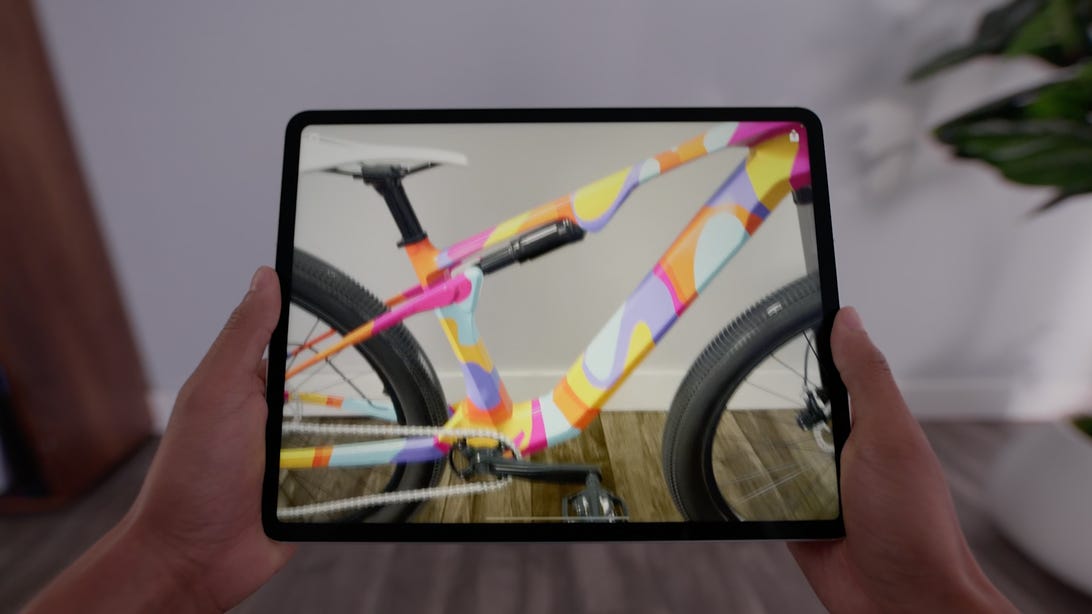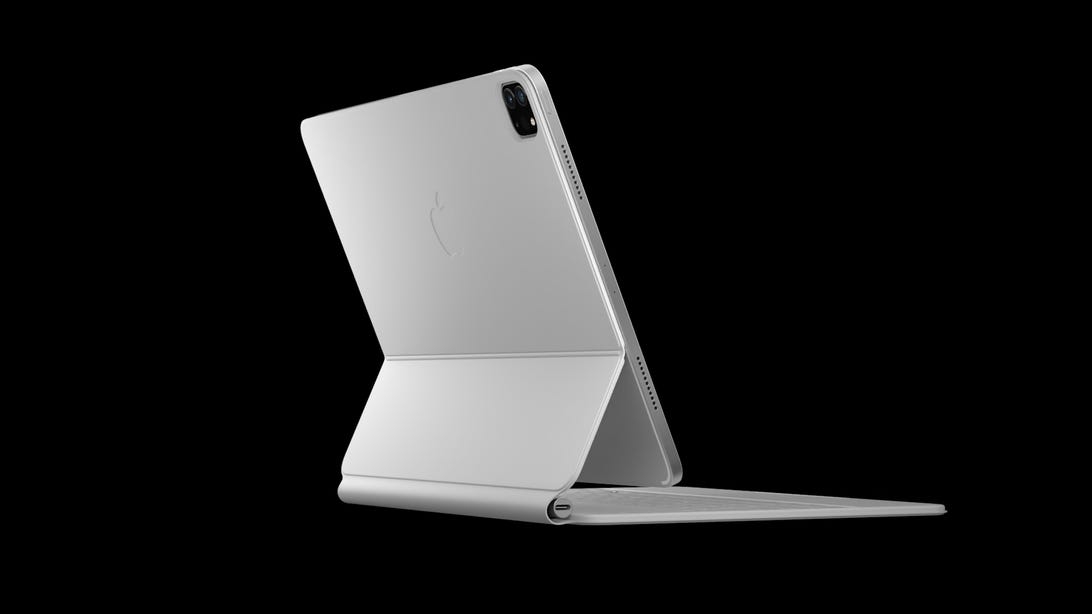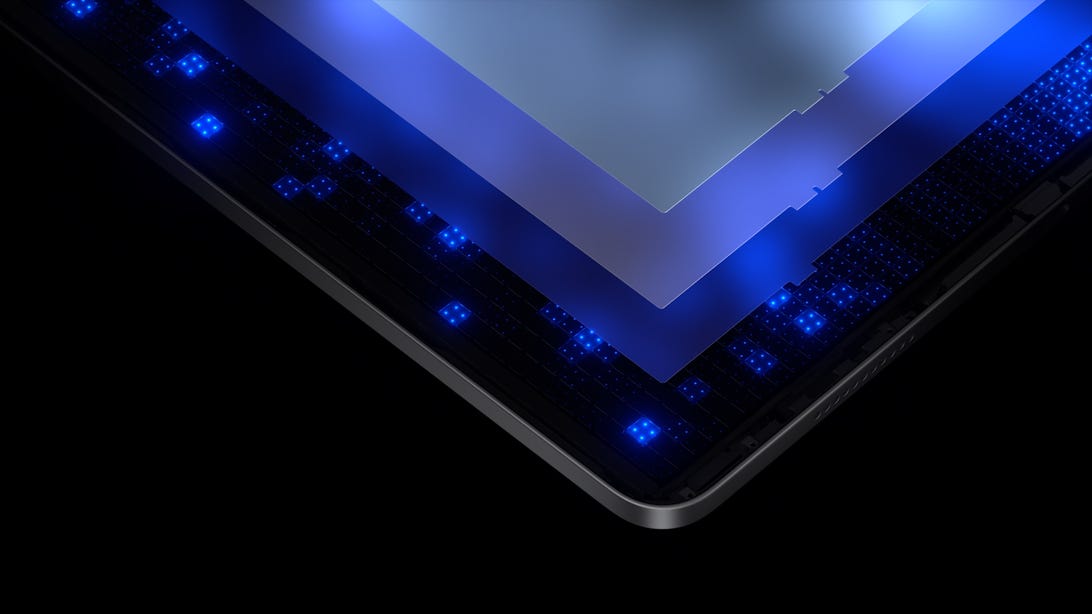
Apple's newest iPad Pro uses the same processors as Macs. The convergence is here.
Apple/Screenshot by Sarah Tew/CNETYou're at home. You reach for a computer. You're working from home. What do you use? Based on my home, it's whatever's available. For Apple, the equation keeps changing: Between Macs and iPads, there are two versatile but different platforms at play. But they now share the same processor: The M1 chip from the MacBook Air, 13-inch MacBook Pro, Mac Mini and new 24-inch iMac is also in the new iPad Pro, as shown at the Apple spring event Tuesday.
This sounds like a huge leap toward the iPad as full-power computer, much like I've been expecting for years, but in reality the iPad Pro was already at that level with its previous processor. What's held the iPad Pro back is its software, which also limits how external devices like displays and external storage can be used. The newest iPad Pros sound like incredibly powerful race cars. But they're also priced that way.
M1 promises even more speed gains
The 50% and 40% boosts on CPU and graphics power, respectively, for the new M1 chip compared with the A12Z processor on the 2020 iPad Pro sound great, but what do those mean? It'll depend on the apps that take advantage of them. The iPad Pros do look to further merge the rear lidar sensor, which uses an array of lasers to depth-scan 3D spaces, with its cameras. Much like the recent iPhone 12 Pro, expect these iPads to be even better at augmented reality and 3D scanning.

The iPad Pro still works with the Magic Keyboard, but expect more accessories via Thunderbolt.
Apple/Screenshot by Sarah Tew/CNETThunderbolt port means more accessories
The identical-looking USB-C port on the iPad Pro is now USB-4- and Thunderbolt-capable, which will allow faster-speed accessories and storage, and possible compatibility with a wide range of Thunderbolt docks and dongles. Think Kensington's recent StudioDock for iPad Pro, but maybe even more. Apple also promises that the iPad Pro can output to the Pro Display XDR. That depends on apps enabling display output, which not all iPadOS apps do. Or, it strongly suggests that Apple will enable multidisplay support in iPadOS at its upcoming WWDC event.

The mini-LED technology on the larger iPad Pro promises much better brightness and contrast.
Apple/Screenshot by Sarah Tew/CNETThe stepped-up display comes only to the 12.9-inch model
Apple's laying down big claims on the quality of its mini-LED based Liquid Retina XDR display, which will have thousands of small LEDs for more localized backlighting control and allow greater brightness and contrast ratios. That new display will only be on the 12.9-inch iPad Pro and at a cost bump: the entry-level version is $1,099 (£999, AU$1,649), and that only includes 128GB of storage.
Read more: Apple 12.9-inch iPad Pro has Liquid Retina XDR display with eye-watering specs
5G is here, but it'll cost you
I don't use cellular on iPads, mostly because I just tether to my phone. But these 5G-enabled iPad Pros do break new ground, being Apple's first 5G devices that aren't phones. Just adding 5G capability costs $200, though. You'll still need to pay for service every month, too.
Read more: Apple gives iPad Pro a 5G option, though carrier plans will cost you

Center Stage will follow faces in video chats, much like the Facebook Portal.
Apple/Screenshot by Sarah Tew/CNETA new front camera promises better video chats
A new wide-angle camera introduces a face-following digital zoom feature Apple calls Center Stage. Much like Facebook's Portal, the camera follows whoever's speaking, even multiple people, and zooms to frame them. The feature should work across apps, but it won't necessarily fix the issue of direct eye contact on iPads. These new iPad Pros still have their cameras on the shorter end, instead of on the long edge, so chatting in landscape mode (which I usually do, since I use keyboard cases that dock that way) sometimes means I'm not looking directly at the camera. Will the new iPad Pro fix this issue? We'll see when I get to test it out, but Center Stage still sounds like a welcome feature.
Price: Way beyond what most people would want
These iPad Pros are clearly, clearly not for people without a lot of money. As in, at least $1,000. The entry-level 11-inch iPad Pro starts at $799 (£749, AU$1,199), and that's for only 128GB of storage. Bump that up a bit and get an accessory (a Magic Keyboard or an Apple Pencil), and you're well beyond $1,000. The prices climb even further: a new 2TB storage option, plus 5G, mean the 12.9-inch iPad Pro tops out at $2,399 without a single accessory. That is a lot.
Apple's entry iPads are still in the $300 range, meaning the price range for iPads now spans several thousands of dollars. If you're considering the iPad your all-in-one production tool, which many people do, then the cost might be justified. Or if you just love having a really nice tablet for yourself.
The iPad is extremely versatile, and really could be a do-everything device. But it still isn't quite that for me yet, even after all these years. The iPad Pro does have stellar qualities (display, Pencil, camera) that Macs still don't have. For the most part, the new iPad Pros are about as expensive as the 2020 ones. But here and there you may end up paying more.
I wouldn't expect these iPad Pros to be relevant for every iPad user. But I'm very curious to see how far the new features carry the products forward.
On paper, the iPad Pro looks ready to be the AlternaMac
I want to try the new Pros before I can say whether they're worth it, and still looming and unknown is how far Apple will open up iPadOS to make the most of these machines. But the shift to an M1 processor feels more than symbolic.
The iPad-reminiscent new iMac, which shares the same processor, feels like a spiritual cousin. Maybe iPads are really ready to be a part of the same computer world as Macs. Or Macs are increasingly bleeding into iPad territory. Somewhere, the two are meeting. And that meeting point is now the M1.
https://ift.tt/3v9cBDZ
Bagikan Berita Ini
















0 Response to "iPad Pro: Apple's new M1 tablet is pretty much becoming a Mac - CNET"
Post a Comment